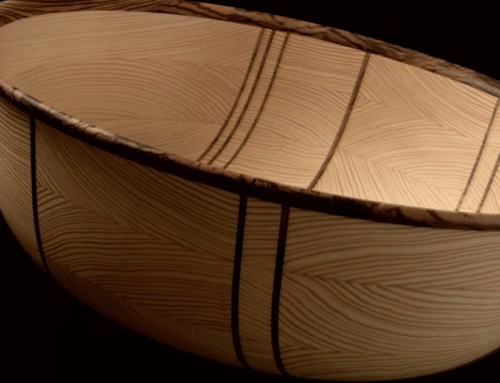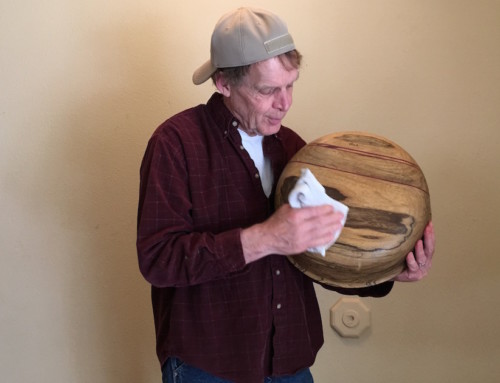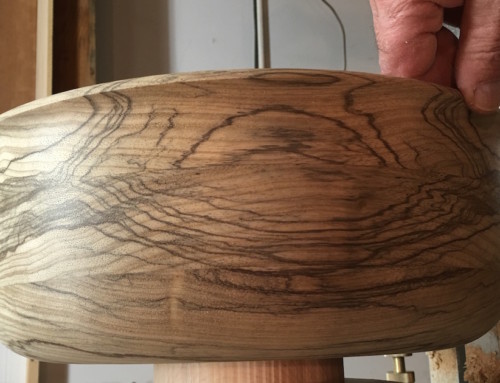It was my first balsa wood airplane that gave me an immediate appreciation for thin wood. My airplane was fun to assemble and easy to fly through the air at the flick of my wrist. I marvel now how years later my entire artistic speciality centers around thin wood. I’m talking thin because I make some of my bowls 1/8th of an inch thick. And calipers don’t lie. They are my buddies who guide me as I turn the wooden bowls. Even using them, I can get the bowl too thin and then it becomes a loss.
Thin Wood Bowls
Many people believe thinness is such a desirable state in our society. While this may not be the best for everything, it is certainly a wonderful trait for a wood bowl. This allows it to be larger but still remain quite light. And why are my bowls so thin? Because it is a characteristic of my work. Making thin bowls is the ultimate challenge for me. I like to see the surprise on their faces when folks pick up a bowl to find it is quite light when held. It is impossible to turn all my bowls to within 1/8th of an inch. The type of wood I
light. And why are my bowls so thin? Because it is a characteristic of my work. Making thin bowls is the ultimate challenge for me. I like to see the surprise on their faces when folks pick up a bowl to find it is quite light when held. It is impossible to turn all my bowls to within 1/8th of an inch. The type of wood I
am turning and even its amount of grain determines the thin-depth possibility. Sometimes I detect little defects in the wood during the last turning that can not be further sanded out. I’m always wary of them.
My Wood Talks To Me
As I’ve said before, as I turn the bowls, they speak to me. I can actually hear the bowl’s depth because it has a certain ring to it. I love how the bowl tells me I’m getting close to the desirable thinness. Even above the hum of the lathe, I can hear the wood tones warning me to be extra cautious.
Ah, the indescribable joy I receive when I remove the bowl to discover uniform thinness. I hold it up to the light and turn the creation. With some species, I can see the light shining through the wood. Some of the bowls I’ve turned for the Ann Arbor Michigan art fair are my thinnest thus far. I believe these are my finest pieces and I’m so excited to share them with a live audience there at the art fair.




